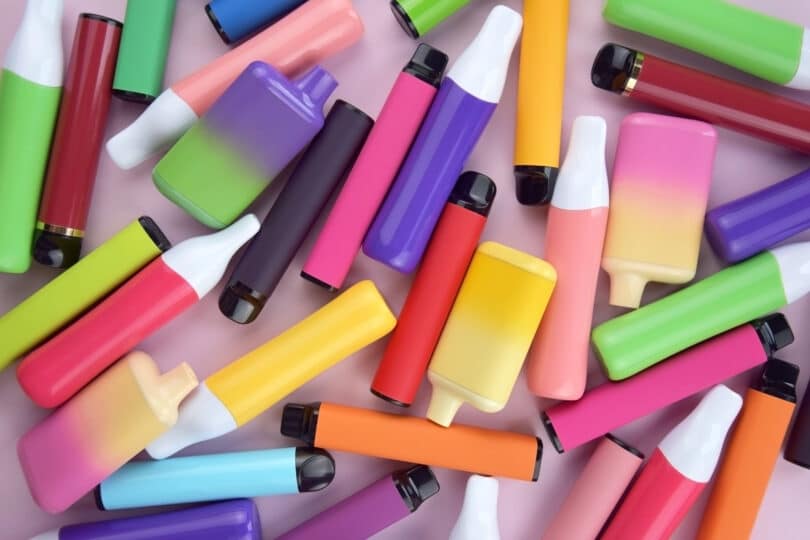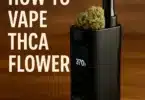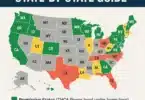The disposable vape market has grown in recent years, despite laws against them. How big is the industry now?
Disposable vapes and vaping in general
The term ‘vape’ is used for varying products that do the same thing, but aren’t exactly the same. Vapes are used to inhale a drug (plant or otherwise), by heating enough to vaporize the contents of the drug, without allowing them to burn. Different materials vaporize at different temperatures, and vapes are made for the types of materials they can vaporize. Currently in American culture, the two main things to vaporize, are tobacco and cannabis products.
Vaping is in contrast to smoking, which is combustion. Smoking always means burning the matter and inhaling the products. Smoke inhalation is a general term for varying symptoms that come from the inhalation of too much smoke; whether from a forest fire, house fire, or cigarettes. For reasons likely related to politics surrounding cigarette lawsuits, it became a thing to think of tobacco as synonymous with smoking damage; regardless of the thousands of years of history in which tobacco was used medicinally.
The ubiquitous idea now, even among many in the medical community, is that tobacco leads to damage; not that smoking leads to damage. This logic has worked to help rule out products like nicotine gummies, which could have taken the smoke out of the equation; or vape products, that similarly offer an alternative to lighting something on fire, and breathing in. This is a massive misunderstanding.

Logically this means smoking weed is just as bad as smoking cigarettes, which goes against a long held belief (or desire to believe) that cannabis smoke is somehow less dangerous. Though there might be differences in additive chemicals, the main difference between the two is in how often the substance is smoked. There are heavy joint smokers that’ll go through 20 a day, but the reality is that most weed smokers only light up a fraction of the times a day a cigarette smoker will.
There are vapes for plant material, and vapes meant for oils; the latter of which introduce other chemical components in the form of flavorings, colorants, stabilizers, and other chemicals. So far, all problems with vaping have been related to these additives; and not to actual vaping. Although, having said that; no one knows the long term effects of vaping oils, since it hasn’t been done in such high volumes as of yet in history. So far, vaping has not shown to cause the same kind of damage as cigarettes.
When looking at the world of nicotine vapes, a new separation becomes evident; between refillable vapes, and disposable vapes. Refillable vapes have cartridges that can be reused indefinitely; while disposable vapes are used once, and then thrown away. This does create an environmental issue, although having said that, and for as much attention as that gets; it will likely never compare with the industrial waste issues, of say, the oil or automotive industries.
How many people are using disposable vapes?
The disposable vape market is very new; a few years ago we weren’t having this discussion at all. And when the conversation really began, it was triggered by nicotine vape products by companies like Juul. These companies and products are linked mainly to a fear of children vaping, and are not based on any death or injury claims.
Actually, the first vape company to get a lot of governmental attention, and which received the line on fear for children, was Smoking Everywhere, back in 2009. This wasn’t about disposables, it was simply about vaping. From the get-go, US governments were unhappy with the new industry. Likely because it was (and still is) an industry of unregulated products. Translation? Governments have 0 control over it.
The disposable vape market started sometime in the 2010s, though its hard to find a solid date. New Vaping credits the company MOTI as the first company to release a product, the MOJO Disposable Pod Kit, in 2019. Regardless of whether it truly was first, the government first responded in 2020 with letters to vendors to take products off shelves. Of course, its now over halfway through 2023, and those products are still there; which is a testament to the lack of control over this industry by governments.

The same article by consumer advocacy nonprofit group CASAA, that mentions these letters; also makes clear through its history of vaping, that there has never been a study that linked vaping to the same dangers as smoking. In fact, anything to come out, has shone a positive light on vaping; yet despite this, and all logic of a clearly safer smoking alternative; they’ve been banned in most places.
In terms of where the disposable vape market is now, according to Grand View Research, worldwide it was worth about $5.7 billion in 2021. According to Grand View, until 2030 the market is predicted to grow at a compound yearly rate of 11.2%. The reason it expects this growth rate, is the growing understanding of smoking damage from cigarettes. So while governments have nearly uniformly chosen to ignore vaping as a healthier option, consumers seem to get it.
One of the only exceptions right now is the UK, which recently decided to adopt a policy to convert smokers to vaping; so long as they buy a legal product. This is quite a turnaround from the line of intense danger that most governments are still spitting out. In fact, according to CASAA, in 2009, when vapes were just getting big, Australia actually banned e-cigarettes, saying “every form of nicotine except for replacement therapies and cigarettes are classified as a form of poison.” As in, the government of Australia said smoking is not poison, and vaping is.
Some other general stats on disposable vape market
When it comes to how big some markets are, a look at total sales will give you an answer. Think of buying cars. There are for sure illicit car operations, but its not something that gets a lot of attention, or which shows in high numbers. The market is therefore easy to track, because its mainly legal. When it comes to black market products, there’s no reporting sales figures to governments, or governments collecting taxes on the products. Which means no matter how assuredly you’re given certain information; there’s no way to know how accurate it is. This is always something to keep in mind when looking at black market data.
According to a study in BMJ Journals, entitled, Bigger, stronger and cheaper: growth in e-cigarette market driven by disposable devices with more e-liquid, higher nicotine concentration and declining prices, between 2017 and 2022, the volume capacity of disposable vapes went up by 518%. It also said that the nicotine strength went up 294% to 5%. Sounds all fine and good, but then if you look at methodology, you’ll see that this was obtained through NielsenIQ retail scanner data. As in, it requires the operation to actually scan the product, in order to get listed.
The thing is, the illicit vape market is mainly a black market, which indicates no reporting at all. According to a June NBC article, 9,000+ vape products exist in the US, and the majority its thought are foreign made (China). As all disposables are automatically illegal, and they make up reportedly around 40% of the vape market, we know at least that amount is illicit. Very few vape products are approved – maybe 1% or less, meaning its likely closer to the 100% illicit line, than even the 50% illicit line. The idea that the study mentioned would be able to track this market through scanning, is silly at best.

NBC in its article, also quoted analytics company IRI. According to IRI, there are more than 5,800 disposable vape products sold in the US market, which is a 50% increase from 2020, and over 50% of the market, if 9,000 is accurate for overall vape products. According to IRI, the total retail value of the industry is $7 billion. Statistics for this industry came indirectly from the Associated Press; but where they came from, or how they were obtained, was not explained.
According to SingleCare, in 2020 there were 68 million people worldwide using e-cigarettes, and by the end of 2021, it was 82 million. The same data sheet states that as of 2021 in the US, 4.5% of American adults used vapes. The specific grouping of 18-29 year-olds saw an increase from 8.8% to 10.2%, between 2019 and 2021.
I’d love to give more info, but not much exists in hard numbers for the US or abroad. Just a bunch of similar guesses as what I’ve already mentioned. Like the UK, in which its thought that 1/3 of vape products are likely illicit, but for which no clearer answer exists. The majority of articles on the subject are more interested in pushing fear for our children. If you looked through most, without having any real knowledge, you’d think only children used e-cigarette products. And while this fear is pushed; very few care to mention that this means a reduction in children smoking; or that its mainly an adult-based market.
Conclusion
Should we really care if more people are doing the thing that doesn’t lead to death? For all the information I came by about vapes, there was very little about actual deaths. In fact, nothing just comes right out. Despite this, the constant and ongoing fear campaign about children using vapes over cigarettes, continues. Along with tons of other material which seemingly means to push smokers back into smoking. After all, governments make a killing on cigarette taxes, not on vapes.
Hello readers! Thanks for being a part of Cannadelics.com; a place to go for independent reporting of the growing cannabis and hallucinogen spaces. Join us regularly to access all updates; and head over to the Cannadelics Weekly Newsletter; for the best product promotions along with the news.







